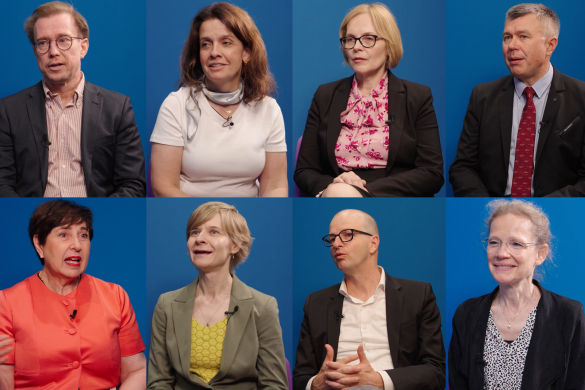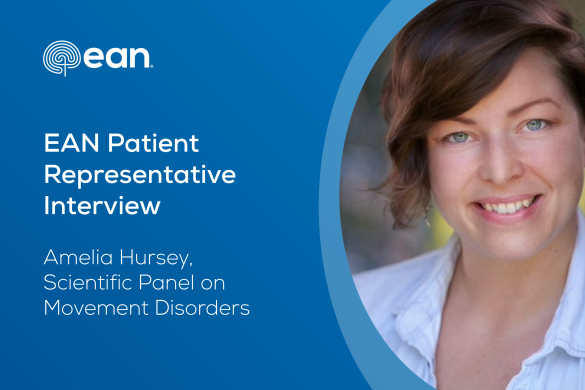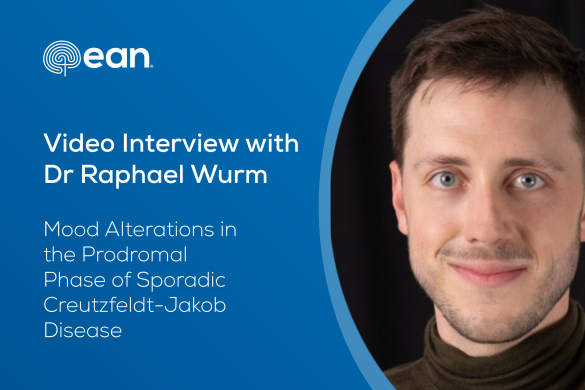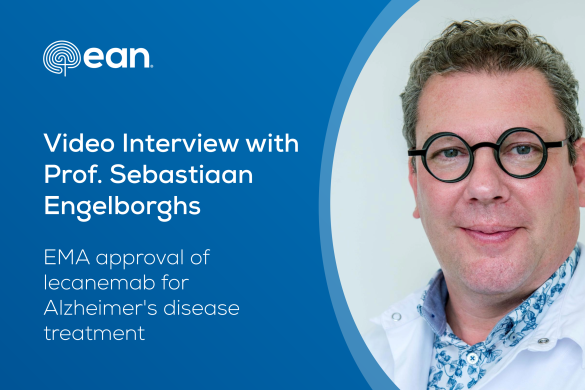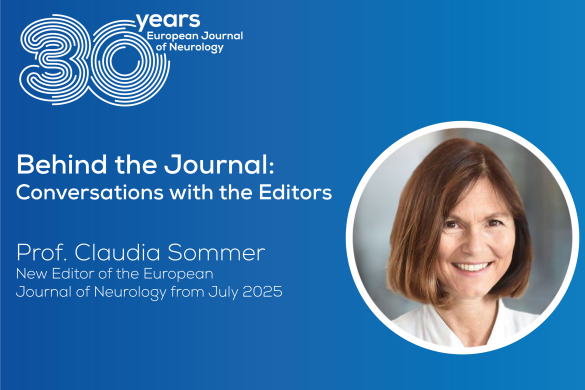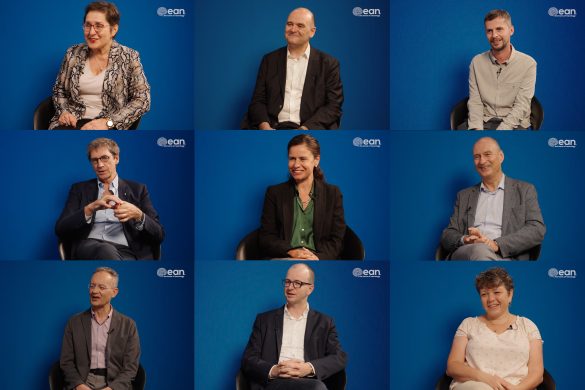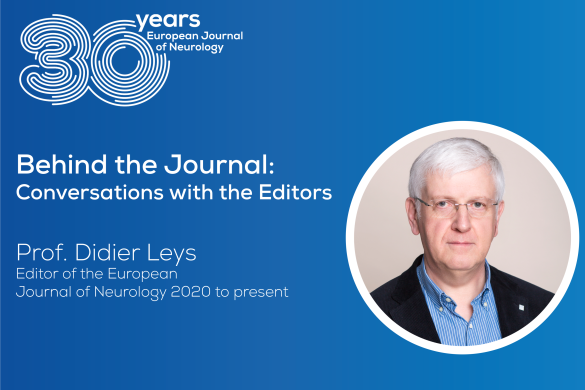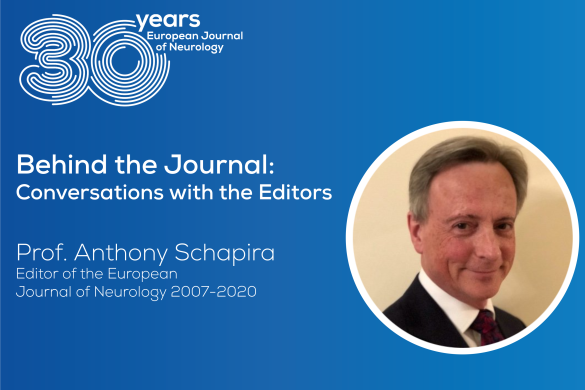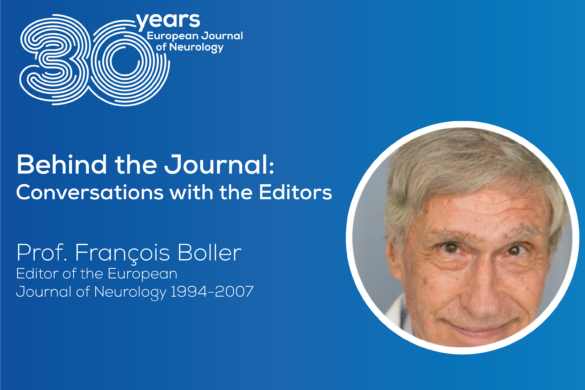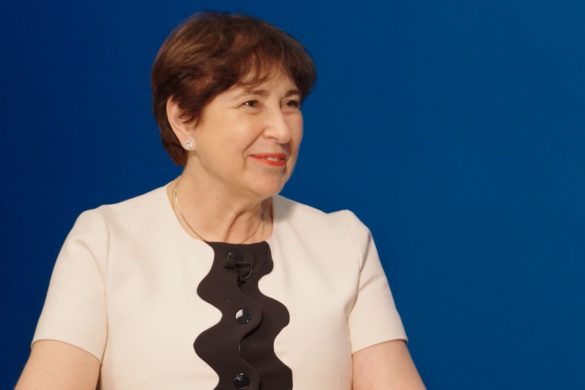Introduction by Gian Luigi Lenzi
As Editor-in chief of Neuropenews, I have preferred, so far, not to write any particular Introductions to the Interviews that Neuropenews publishes monthly, kindly released by public authorities in the Neurological world and elsewhere.
Our September 2013 Interview was kindly given by Prof. Vladimir Hachinski, the President of the World Federation of Neurology. Prof. Vladimir Hachinski is so well known throughout the neurological world for well over 40 years that a “neurological” Introduction, reminding our readers of the Hachinski Ischemic Score, or of the several books on stroke, or of the leukoaraiosis, could be a very easy one to write, but it could only seem to be a plagiarism.
On the other hand what I would like to share with our readers about Prof. Vladimir Hachinski is a very personal appreciation. The “Vladimir” whom I became acquainted with when he visited Rome University as Visiting Professor and I invited him to spend a weekend in my country house in Tuscany. There, sitting together on my terrace looking out over the Chianti countryside, after a long and not easy walk (especially for his wife!) through the woods, sipping quite a few glasses of our Chianti Classico Gallo Nero, he began to talk about his family, first his father (who armoured a truck to get his family through the Iron Curtain at the USSR-Turkey border, under gun fire, escaping into Turkey and then quickly to Argentina) then his son playing classic piano (I still have a nice gift of a CD, with his son playing). I was talking about Siena history, about winemaking, about landscapes due to millenary human work. For many hours, neurology was out of our talks, stroke was completely forgotten, and just four people, Vladimir, myself and our wives were expressing some personal soul searching with many questions about life, why, where, because, if ……
The warmth that I feel every time I meet Prof. Vladimir Hachinski is very sincere and the reciprocating warmth that I feel from him towards me makes me quite sure that we both remember well these hours shared together many years ago.
So to our NEUROPENEWS readers my introduction is an indication for understanding that behind Prof. Vladimir Hachinski’s interview, with his push toward “integrate the differences into commonalties”, his attention towards developing countries, there is a rich personal history, sincere emotions, great warmth and plenty of deep feelings.
I only wish that some of you might have the opportunity to be able to get close enough to Prof. Vladimir Hachinski to discover even just a hint of my friend Vladimir.
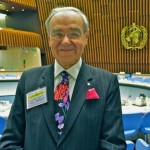 Professor Vladimir Hachinski is President of the World Federation of Neurology
Professor Vladimir Hachinski is President of the World Federation of Neurology
Neuropenews (NN): As President of the World Federation of Neurology, and world-renowned “Stroke-specialist”, you are confronted with the full panorama of Neurological Sciences. How will you combine your “particularis” with the “universalis”?
Vladimir Hachinski (VH): If one looks at the burden of disease of all neurological conditions, as disability adjusted life years (DALYS – an index of premature death and incapacity), it turns out that 55% are attributable to stroke and 12% to Alzheimer’s disease. This represents 2/3 of the neurological burden. As someone interested in stroke and preventable dementias, I have been comfortable in pushing the agenda to combat and prevent both conditions since they share the same risk factors. The UN Resolution on Non-Communicable Diseases of 2011 targets unhealthy diets that include fatty foods, high calories and sugars and salts, physical inactivity, tobacco addiction and alcohol addiction and thus I have tried to work very hard with the WHO to make sure that this is implemented in regards to the brain and hence stroke and preventable dementias.
As President of the World Federation of Neurology I initiated the formation of the World Brain Alliance that comprises all major brain organizations and our aim is brain health, which is much broader than neurology or any of the subspecialties. It was founded on the premise that the brain is key to health; that brain health begins with the mothers and their children’s education and that our brains are our future, given the increased complexity of the digital age.
We have also changed the mission of the WFN to be “to foster quality neurology and brain health worldwide”. In order to achieve this agenda one of the great satisfactions has been able to work with a broad range of accomplished individuals in all subspecialty areas and one of the great challenges is to integrate the differences into commonalities, ie the “particularis” in the “universalis”. Knowledge is acquired in pieces, but is understood in patterns and sub-specialization is excellent for providing small pieces of information but we have a great need to synthesize the small pieces of knowledge into a comprehensible and compelling vision. We have tried to do that.
NN: In the Western world, neurology is moving at high speed towards hyper-specialisation while a large part of the world’s basic aspects of neurology are still underdeveloped. How can the WFN help to bridge this gap?
VH: The great advances in the Western world have been due to technology. Interestingly we have found that some of these developments are being applied more readily in the developing world than in a developed one. We have started a program of Grants-in-Aid where any member of the WFN can submit a proposal and that is reviewed according to strict criteria with the help of several brain organizations. We are finding that some of the projects that we are funding in developing countries avail themselves of technologies that have been developed in the Western world and it may be that because of increasing health care costs in the developed world, we may need to learn how to do things more efficiently with the technologies that are now being applied in the developing world without the obstacles that such innovations would face in our over-organized and over bureaucratized world.
NN: Which role could the EAN play in helping the WFN achieve this objective?
VH: The European Academy of Neurology will be a dynamic regional component of the WFN. For a number of years the EFNS and WFN have collaborated in an annual course offered in Africa. There will be many more opportunities for joint programs of the WFN and the EAN.
NN: The costs of clinical trials and new drugs for neurological diseases are increasing exponentially. How can developing countries be helped to cope more effectively with these costs?
VH: We have to develop two-stage types of clinical trials. The first stage to be done in sophisticated centers with all the technology and tests and then a simplified protocol could be used much more widely. Here is where developing countries can offer the numbers that are required to get answers more quickly. Moreover, the best users of a new drug are those who have gained familiarity with it in a clinical trial. The costs themselves can be reduced if consortia are formed between developed and developing countries, so that they can negotiate with drug companies on the basis that by increasing the market, they can get cheaper drugs not only for developing countries but for the developed countries as well.
NN: Infectious diseases of the CNS are still a major burden in many developing countries. Which educational and other programs does the WFN plan for helping developing countries address the management of these diseases?
VH: For our Grants-in-Aid program, we respond to individuals in developing countries so that they are free to submit projects on infectious and non-communicable diseases. Our experience so far is that the non-communicable diseases are representing a much greater burden than infectious diseases, which reflects an overall world trend.
NN: In 2014, EFNS and ENS will form the EAN. What is your message to the EAN as President of the WFN?
VH: Congratulations! Unity means strength. May the EAN become an increasingly dynamic force in Europe and beyond in working with the WFN to become a model of effectiveness and achievement.




